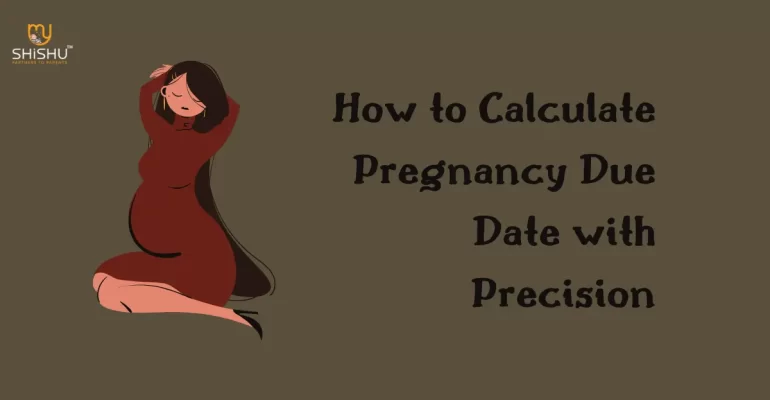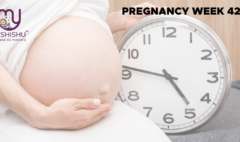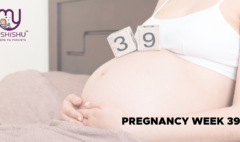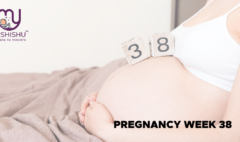How to Calculate Pregnancy Due Date with Precision: Mastering the Art
How to Calculate Pregnancy Due Date with Precision: Mastering the Art
Embarking on the beautiful journey of pregnancy brings forth an array of emotions and questions, one of the most pivotal being: “How do I calculate pregnancy due date?” Understanding the methods to calculate this crucial milestone is not only exciting but also essential for proper prenatal care. In this comprehensive guide, we will delve into various approaches to calculate pregnancy due date, ensuring you are well-equipped with the knowledge needed for a smooth and informed pregnancy experience.
Table of Contents
I. Grasping the Foundations
A. Decoding the Menstrual Cycle

Before we dive into the intricacies to calculate pregnancy due date, let’s lay the groundwork by understanding the menstrual cycle. Typically lasting around 28 days, the menstrual cycle is a key player in the process of conception and due date determination. Ovulation occurs approximately on the 14th day of this cycle when an egg is released, eagerly awaiting fertilization by sperm.
B. Conception and Gestational Age
The gestational age of a pregnancy is calculated from the first day of the last menstrual period (LMP). While this may seem counterintuitive, as conception usually occurs around two weeks later, this method serves as a standardized starting point for healthcare providers to gauge the progression of pregnancy.
II. Navigating Naegele’s Rule
Naegele’s Rule stands as a widely employed method to calculate pregnancy due date, particularly for those with a 28-day menstrual cycle. Let’s break down the steps:
- Begin with the first day of your last menstrual period (LMP).
- Add 7 days to that date.
- Count three months back.
- Add the current year.
By following these steps, you can swiftly calculate pregnancy due date. For instance, if your LMP was on May 1, adding 7 days (May 8), counting back three months (February 8), and incorporating the current year (e.g., 2023) would result in a calculated due date of February 8, 2024.
III. Embracing Ultrasound Dating
While Naegele’s Rule provides a general estimate, ultrasound dating takes precision to the next level, especially for those with irregular menstrual cycles. Typically conducted between weeks 8 and 20 of pregnancy, an ultrasound measures the fetus’s size, offering a more accurate estimation of gestational age.
A. The Significance of Crown-Rump Length (CRL)
Ultrasound dating often hinges on the crown-rump length (CRL) of the embryo – the distance from the top of the head (crown) to the bottom of the buttocks (rump). This measurement is most accurate during the first trimester, providing a reliable estimate of the due date.
B. First-Trimester Screening
To further enhance how to calculate pregnancy due date and assess potential chromosomal abnormalities, healthcare providers may incorporate first-trimester screenings, combining ultrasound measurements with blood tests for a comprehensive analysis.
IV. Tailoring for Irregular Cycles
Individuals with irregular menstrual cycles may find due date calculation more challenging. In such cases, healthcare providers may opt for alternative methods, such as adjusting for the “adjusted menstrual cycle” or relying more heavily on ultrasound dating to ensure accuracy.
VI. Entrusting Healthcare Providers
Throughout the pregnancy journey, healthcare providers play a pivotal role in monitoring fetal development and ensuring the well-being of both mother and baby. Regular prenatal check-ups, ultrasounds, and diagnostic tools empower healthcare professionals to make adjustments to the estimated due date as needed.
VII. Conclusion
Calculate pregnancy due date is a journey within a journey, a process that intertwines science and anticipation. While methods like Naegele’s Rule provide a quick estimate, ultrasound dating offers unparalleled precision, particularly for those with irregular menstrual cycles. Remember, the due date is an estimation, a beacon guiding you toward the life-changing moment when you’ll hold your precious one in your arms.
As you navigate this incredible journey, lean on the expertise of healthcare providers, revel in the excitement of each ultrasound, and prepare for the day when the calculate pregnancy due date transforms into a reality, bringing boundless love and joy into your life.
FAQ: Calculate Pregnancy Due Date
Q1: What is the significance to calculate pregnancy due date?
A1: To Calculate pregnancy due date is crucial for tracking the progress of pregnancy, planning prenatal care, and ensuring both the mother and baby receive the necessary medical attention.
Q2: How is the due date calculated using Naegele’s Rule?
A2: Naegele’s Rule involves starting with the first day of the last menstrual period (LMP), adding 7 days, counting three months back, and then adding the current year.
Q3: Can due dates be accurately determined for women with irregular menstrual cycles?
A3: While it may be more challenging, due dates for women with irregular cycles can be estimated through methods such as adjusted menstrual cycle calculations and reliance on ultrasound dating.
Q4: What is the crown-rump length (CRL) and how does it relate to ultrasound dating?
A4: The CRL is the measurement from the top of the head (crown) to the bottom of the buttocks (rump) of the embryo. Ultrasound dating often uses CRL to provide a precise estimate of gestational age.
Q5: Why is ultrasound dating considered more accurate than Naegele’s Rule?
A5: Ultrasound dating is more accurate because it directly measures the size of the fetus, providing a real-time assessment of gestational age, especially beneficial for those with irregular menstrual cycles.
Quiz
1. What is Naegele’s Rule used for in pregnancy?
a. Measuring fetal size
b. Estimating gestational age
c. Calculating ovulation date
2. When is the gestational age of a pregnancy typically calculated from?
a. Date of conception
b. First day of the last menstrual period (LMP)
c. Ovulation date
3. What does CRL stand for in ultrasound dating?
a. Crown-Rump Length
b. Conception Rate Limit
c. Cycle Regularity Level
4. Why is ultrasound dating considered more accurate than Naegele’s Rule?
a. It relies on blood tests
b. It directly measures fetal size
c. It estimates ovulation date
5. Can due dates be accurately determined for women with irregular menstrual cycles?
a. No, it’s impossible
b. Yes, through adjusted menstrual cycle calculations and ultrasound dating
c. Only if they have a regular ovulation cycle
Answers:
- b. Estimating gestational age
- b. First day of the last menstrual period (LMP)
- a. Crown-Rump Length
- b. It directly measures fetal size
- b. Yes, through adjusted menstrual cycle calculations and ultrasound dating











